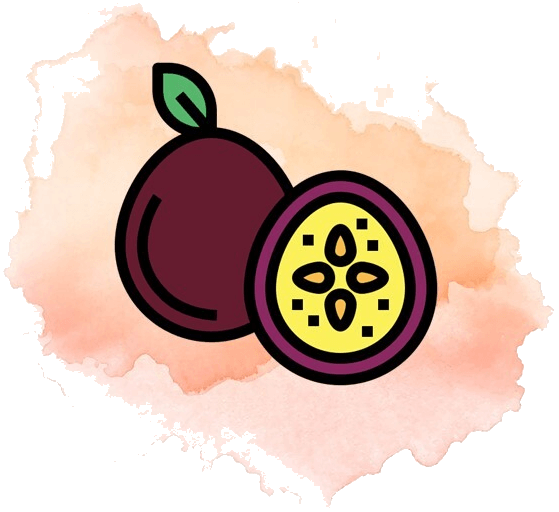“The key to being happy is knowing you have the power to choose what to accept and what to let go.”
– Dodinsky
Happiness is hard to come by.
Or that is generally what we divulge ourselves to believe in because of how we often choose to look it. Happiness in today’s world is an elusive emotion, which at its best, is fleeting and at its worst, is non-existent. Happiness is always an outcome that is ever changing, a goalpost that is ever moving, a destination that we are ever chasing. Happiness has become a measure of a successful transaction, a zero-sum game. You do this, you get that and so you will be happy.
But the problem lies in confusing happiness with gratification. In this mercurial era, everyone is looking for instant gratification, myself included. I want to post something on my Instagram and immediately want hundreds of likes and thousands of followers. You maybe looking to join a new job and want instant recognition. You do what you are supposed to and should get immediate and disproportionate gratification. You do this, you get that. Instant gratification.
Happiness doesn’t work that way. It is not fleeting. What it is, is it’s prevalent. You can find it everywhere, right from the little joys like stepping out in sunshine on a cold winter day to giant jubilations like giving birth to a baby. So, think of happiness like a constant tagged to the variable of everyday. That expression, so to say, which forms through a constant and variable is your current value of emotion of any given situation. Now the value of variable is not in our control, much like the outcomes of circumstance in our lives. On top of that, it could come as an exponential, as a square root, or something with limits and whole lot of mathematical baggage. But the constant tagged to it, the happiness factor within you as a person, that is a score that you are defining for yourself.
For instance, you may be a person who is objectively at a happiness factor of 2. You don’t put much thought about what makes you innately happy whatever be the situation and hence your expression would be, say, 2x – x being the variable of the everyday situation. So then what would you do to maximize your emotion in a positive way? You would look to increase the value of that variable. You would look to see what are the things that you can do which will increase that value in that moment to maximize your overall score. Maybe you would go on social media and post a cute picture to get hundreds of likes. Maybe you would hit the stores and shop till you drop. Maybe you would try to get a laugh at the expense of others just to get that high of being superior. Maybe you will actually get high. You do this, you get that. Instant gratification.
But the problem with situations is that they pass. Yes, you can try to maximize your score for that one moment but then you have to move on. Because after some time, others will move on and the high will too. So, then you are left with hitting that replay button to start the whole show again to gain that high from maximizing your score. You post another picture, you shop some more, you mock more, you drink more. Perhaps that is why we get addicted to some of these things? Perhaps in the absence of knowing how to maximize that happiness factor, which is actually in our control, we obsess over maximizing the variable, which in fact is not at all in our control. No one can promise your next post will get more likes. No one can promise what the value you will get out of it. Because it is a variable.
But think for one second if you can maximize that constant factor you are putting down. What if, instead of being a 2, I choose to be a 9? What if, no matter what circumstance, I choose to be happy and at peace. I may get a lot of likes or none, I may get to shop a lot or not, but I will still maximize that situation because I am choosing to be happy irrespective for what value of variable is thrown at me. If it is not as high as I expected, I know I will still be okay. And if I get lucky enough for it to exceed my expectations, that multiplied by my already high base of happiness factor, it will just be an exponential euphoria.
But let’s get back to Earth from cloud 9 for one second. Not everyone has a constant sunny personality, not everyone feels the same levels of happiness all day, every day. My happiness factor for going back to school on a Monday morning will still be a 2, no matter how many frills I try to put on it. So how do I then deal with that? The answer though simple, is still a revelation – at least it was for me.
A few weeks back, which is when I actually started thinking of all this, I was sitting with my mom, engrossed in my work while she was watching something on the television. It was one of those spiritual sermons given by the wise pundits who had dedicated their lives to seek the larger meaning of life. This particular one was by Shri Kuppa Viswanatha Sastry who had become a regular feature of our evening TV sessions. In that discourse, there was something which he said that immediately struck me and I looked up from my laptop with much curiosity. He had brought forward a concept of something called ‘Bahumukhi Anandam’, which is a Sanskrit phrase meaning multifaceted happiness. His astute observation was that in the pursuit of being wholesome beings, we have to learn to derive happiness from all of our surroundings. Our happiness cannot be pivoted on one thing and one thing alone. I cannot be a father who puts the burden of all my happiness on the shoulders of that single child and ignores other facets of my life. It is just too much for any single being to keep with that kind of expectations of fulfilling someone’s dreams, responsibility, and happiness. On the other hand, I cannot be a father who is just buried deep in work, deriving pleasure from promotions while ignoring my children and their needs. I need to be able to leave my work at office and be there for my family when they need me. The point is to have a concept of happiness that is not tied to one thing or one person. The point is to branch out your channels of happiness in as many ways as possible, for your happiness to have many such ‘happy faces’. And thus, the idea behind ‘Bahumukhi Anandam’.
What does that mean for our life equation then? It would mean that we need to find different expressions which bring happiness to us to add into each other. That 2x can be added with another 5y and a third 8z and so on. 2x + 5y + 8z. So, in essence, you are not just maximizing the depths of your positive emotions but also the breadths of it. Expanding vertically and horizontally. I will post an insta-worthy picture every day but also make sure that I cook every day or write every day. I might have a low happiness factor on Monday mornings, but I will make sure that I have Monday evening escapes with my family to balance it out. So, on days when some things are not working well, I know that I have other things to look forward to and be happy about. I may not be able to maximize the x variable and the happiness factor for that situation, but I will tag on other situations with better happiness factors that will make the equation overall positive. I will write out my own equation for Bahumukhi Anandam.
“But it doesn’t always balance out”, you might hear a small voice in your head. What if you flipped the situations? What if, instead of bringing you joy, they bring you sadness? What if the value of the variable is negative? Multiplying that with a bigger constant will obviously make the impact that much heavier too. It’s a case of high reward comes through high risk. It’s probably why you see people who get really happy about the good things also get really sad about the not so good ones. And yes, maybe the risk-averse will say that it’s better I stick to my happiness factor of 2 across the whole of the equation because then I won’t take much hit if things don’t turn out the way I want them to. And yes, that is certainly one of the ways to live – to live within the walls that don’t let you feel anything, don’t let you get too attached to anything. But would that be a good way to live? Yes, you will feel the high when the wind lifts you up and yes, you will feel the hard, cold earth when it knocks you down, but at least then you know that you tried, you gave it your all, and you are alive.
But what if I don’t want those kinds of highs and lows? What is a mathematical trick that I can apply to unequivocally maximize my positive emotion? The answer to that would be two simple lines drawn for each expression of the equation – take the absolute value. Paralleling to what it means in real life is the wisdom of not letting any outcome adversely affect you. That is what is called vimukti, or the liberation – where you have reached the heights of enlightenment that you can turn any value of any variable into a positive emotion. An undesirable outcome or a negative value will still get converted into a positive one and multiplied by your state of happiness. The worldly turmoil does not interfere with your inner stability. You are always in a state of bliss.
But let’s be honest, such kind of ambitions are like make-believe mountains you are trying to scale when in practical terms you are still trying to pay your rent or feed your child. You cannot look at an empty kitchen pantry and be like ‘Oh, that is okay, I am anyways full of happiness today.’ In real life, happiness fills the heart, not the stomach. So as long as you are still in the circle of life, you still have to keep betting on your variables and maximizing your constants. You have to constantly strive to be a better and happier person, irrespective of the situation and you have to constantly strive to find delight in different things, big or small. The only hope is that perhaps, this peek into the workings of happiness will help make that journey a lot more joyful.
Loved it? Read Part One here.







